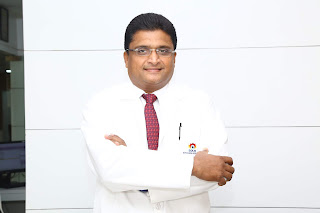What Is a Cataract?
A cataract is a dense, cloudy area that forms in the lens of
the eye. A cataract begins when proteins in the eye form clumps that prevent
the lens from sending clear images to the retina. The retina works by
converting the light that comes through the lens into signals. It sends the
signals to the optic nerve, which carries them to the brain.
It develops slowly and eventually interferes with your
vision. You might end up with cataracts in both eyes, but they usually don’t
form at the same time. Cataracts are common in older people. Over half of
people in the United States have cataracts or have undergone cataract surgery
by the time they’re 80 years old, according to the National Eye Institute.
Symptoms of Cataracts
Common symptoms of cataracts include:
·
blurry vision
·
trouble seeing at night
·
seeing colors as faded
·
increased sensitivity to glare
·
halos surrounding lights
·
double vision in the affected eye
·
a need for frequent changes in prescription
glasses
What Causes Cataracts?
There are several underlying causes of cataracts. These
include:
An overproduction of oxidants, which are oxygen molecules
that have been chemically altered due to normal daily life
·
smoking
·
ultraviolet radiation
·
the long-term use of steroids and other
medications
·
certain diseases, such as diabetes
·
trauma
·
radiation therapy
Types of Cataracts
There are different types of cataracts. They’re classified
based on where and how they develop in your eye.
·
Nuclear cataracts form in the middle of the lens
and cause the nucleus, or the center, to become yellow or brown.
· Cortical cataracts are wedge-shaped and form
around the edges of the nucleus.
·
Posterior capsular cataracts form faster than
the other two types and affect the back of the lens.
·
Congenital cataracts, which are present at birth
or form during a baby’s first year, are less common than age-related cataracts.
·
Secondary cataracts are caused by disease or
medications. Diseases that are linked with the development of cataracts include
glaucoma and diabetes. The use of the steroid prednisone and other medications
can sometimes lead to cataracts.
·
Traumatic cataracts develop after an injury to
the eye, but it can take several years for this to happen.
·
Radiation cataracts can form after a person
undergoes radiation treatment for cancer.
Diagnosing Cataracts
Our doctor will perform a comprehensive eye exam to check
for cataracts and to assess your vision. This will include an eye chart test to
check your vision at different distances and tonometry to measure your eye
pressure.
The most common tonometry test uses a painless puff of air
to flatten your cornea and test your eye pressure. Your doctor will also put
drops in your eyes to make your pupils bigger. This makes it easier to check
the optic nerve and retina at the back of your eye for damage.
Other tests your doctor might perform include checking your
sensitivity to glare and your perception of colors.
Treatment of
Cataracts
If you’re unable or uninterested in surgery, your doctor may
be able to help you manage your symptoms. They may suggest stronger eyeglasses,
magnifying lenses, or sunglasses with an anti-glare coating.
Surgery
The procedure typically is performed on an outpatient basis
and does not require an overnight stay in a hospital or other care facility.
Most modern cataract procedures involve the use of a
high-frequency ultrasound device that breaks up the cloudy lens into small
pieces, which are then gently removed from the eye with suction.
This procedure, called phacoemulsification or
"phaco," can be performed with smaller incisions than previous
surgical techniques for cataract removal, promoting faster healing and reducing
the risk of cataract surgery complications, such as a retinal detachment.
After all remnants of the cloudy lens have been removed from
your eye, the cataract surgeon inserts a clear intraocular lens, positioning it
securely behind the iris and pupil, in the same location your natural lens
occupied. (In special cases, an IOL might be placed in front of the iris and
pupil, but this is less common.)
The surgeon then completes the cataract removal and IOL
implantation procedure by closing the incision in your eye (a stitch may or may
not be needed), and a protective shield is placed over the eye to keep it safe
in the early stages of your cataract surgery recovery.
Outlook of a Cataract
Cataracts can interfere with daily activities and lead to
blindness when left untreated. Although some stop growing, they don’t get
smaller on their own. The surgical removal of cataracts is a very common
procedure and is highly effective roughly 90 percent of the time.
Our Doctor
Cataract, cornea & Refractive Surgeon
To know more about cataract treatments, you can write to us at info@soliseyecare.com. Alternatively, you can also fix an appointment with your experts at your convenience @9515999415, (040)400-688-55 or log on to - http://soliseyecare.com/cataract.html




Comments
Post a Comment